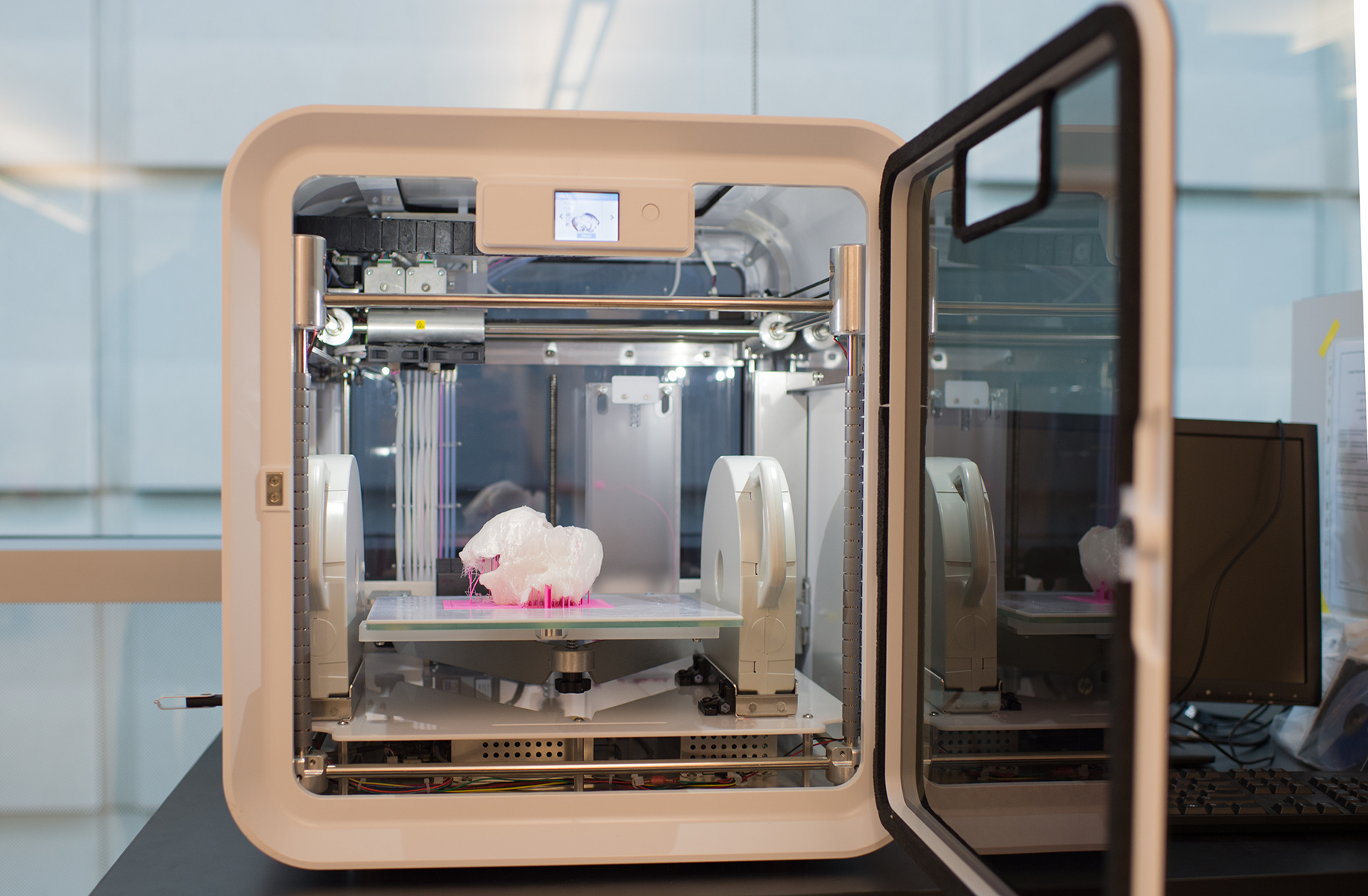A new high-tech printer is ushering in an exciting era of innovation at the Arthur A. Dugoni School of Dentistry.
The purchase of a CubePro Duo 3D printer is the result of collaboration among the Departments of Biomedical Sciences, Orthodontics, Endodontics and Integrated Reconstructive Dental Sciences. Faculty members collaborated to apply for and receive a $9,000 grant from the University’s Technology in Education Committee to cover the cost of the printer, workstation and specialized software.
The printer will provide a new way to use 3D images, now common in dentistry, to enhance the educational experiences of students and residents and the care of patients. 3D printing uses a layer-by-layer manufacturing technique to produce physical objects from 3D digital files.
[pullquote]The printer will provide a new way to use 3D images, now common in dentistry, to enhance the educational experiences of students and residents and the care of patients.[/pullquote]
The school has plans to leverage this innovative technology throughout its curriculum. In the area of restorative dentistry, the 3D printer will help create standard teaching and testing models. In a preclinical simulation setting, dental students can operate on standardized teeth with defects generated by the printer, thus removing the element of variability when using extracted teeth. One 3D-printed, single-tooth restoration costs less than $5, much less than the nearly $200 charged for a model produced by an outside commercial vendor.
The school’s Departments of Biomedical Sciences and Orthodontics have proposed a new selective course for DDS students on “the language of 3D modeling and printing” to give them exposure to this technology. The course will include expanded offerings to focus on topics specific to orthodontics at both the DDS and graduate levels.
[pullquote]3D printing has the potential to reduce the school’s clinical costs by opening a new pathway for manufacturing dental appliances.[/pullquote]
Also, 3D printing has the potential to reduce the school’s clinical costs by opening a new pathway for manufacturing dental appliances. Currently, it costs $125 to print one cubic centimeter of titanium in any shape at an outside vendor. A root analogue implant would use less than this amount, so the cost would be lower. If the dental school obtains its own Direct Metal Laser Sintering (DMLS) printer, the savings would be even greater.
Biomedical science faculty members are organizing to employ 3D printing to create bioresorbable scaffolds for periodontal implants. This process has broad application in dentistry and would eliminate the method of extracting bone from other parts of the body to obtain the graft material.
“The manipulation and printing of 3D images has high potential in dentistry,” said Dr. Gary Richards, associate professor in the Department of Biomedical Sciences. “It’s important that our students have the tools and experience necessary to participate in this revolution.”
